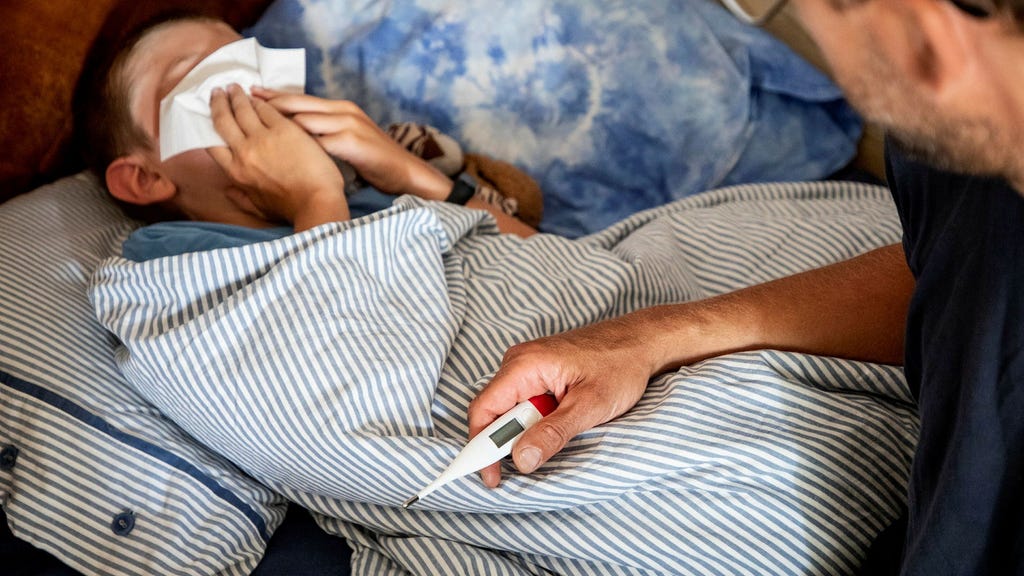Winter Surge of Respiratory and Gastrointestinal Illnesses: An Overview of Current Trends and Preventative Measures
The winter season often witnesses a surge in the transmission of various infectious diseases, primarily respiratory and gastrointestinal illnesses. Public health agencies closely monitor these trends to understand the prevalence and impact of these infections on the population. While COVID-19 remains present, its spread is currently at a relatively low level compared to previous years, largely due to widespread immunity from prior infections and vaccinations. However, the potential for new mutations capable of evading existing immunity necessitates continued vigilance. Predicting peak periods for COVID-19 transmission remains challenging due to the virus’s evolving nature.
Respiratory Syncytial Virus (RSV) began circulating early in the season, typically causing mild cold-like symptoms in most individuals. However, RSV poses a significant risk to infants, particularly those under six months old, who can develop severe respiratory complications. Protecting vulnerable infants is crucial, and minimizing their exposure to individuals with respiratory symptoms, although often challenging, is recommended. The RSV transmission curve is currently on the rise, but the delayed start to the season suggests a potentially milder overall impact, though this remains uncertain.
Influenza activity increased sharply before the holiday season but has since plateaued. A further surge in influenza infections is anticipated in the coming weeks. Vaccination against both influenza and COVID-19 is recommended for high-risk groups, although the window for optimal effectiveness is narrowing. While complete protection from these widespread illnesses is difficult, vaccination significantly reduces the risk of severe complications in vulnerable populations.
Gastrointestinal illnesses, like the norovirus, also follow seasonal patterns. While comprehensive testing data for norovirus is limited, public health agencies utilize online symptom searches to gauge its prevalence. A rapid increase in such searches signifies widespread outbreaks. Norovirus, commonly known as the winter vomiting bug, is extremely contagious. Strict adherence to hygiene protocols, including thorough handwashing and disinfection, is crucial in limiting its spread.
Specific recommendations for managing norovirus infections vary depending on age and health status. For preschool children, a 48-hour isolation period following the last episode of vomiting or diarrhea is recommended to prevent further transmission in childcare settings. Older children and adults, who typically have better hygiene practices and pose a lower risk of transmission, can generally resume normal activities once symptoms subside and normal eating and drinking patterns resume, usually within 24 hours.
The increased awareness of hygiene and symptom management practices gained during the COVID-19 pandemic remains valuable in mitigating the spread of various infectious diseases. While strict isolation for all symptoms may not be necessary, continued caution is advised, especially when interacting with individuals at high risk of severe infection. Healthcare workers, in particular, should continue to adhere to strict isolation protocols when symptomatic to protect vulnerable patients. Determining when a child is well enough to attend daycare or school often relies on their overall condition rather than the severity of individual symptoms. The ability to participate in normal activities is a key indicator of recovery.
Navigating the Winter Season of Illnesses: Practical Advice and Considerations
While predicting the precise trajectory of winter illnesses is difficult, a confluence of factors influences the likelihood of a significant "vabruari" (a period of increased parental leave due to children’s illness). The expected surge in norovirus cases, typically peaking in January and February, combined with the ongoing circulation of other respiratory infections, suggests a potential increase in child illness and subsequent parental leave.
To minimize the risk of infection and protect yourself and others, several preventative measures are recommended:
-
Stay Home When Symptomatic: Avoid contact with others when experiencing clear symptoms of respiratory or gastrointestinal illness, including fever. This helps prevent the spread of infection, particularly to vulnerable populations.
-
Vaccination: Protect yourself against preventable illnesses like influenza and COVID-19, especially if you belong to a high-risk group. Vaccination significantly reduces the risk of severe complications.
-
Hand Hygiene: Frequent and thorough handwashing with soap and warm water, particularly after using the toilet and before handling food, is essential in preventing the spread of infections. Hand sanitizer can be used when soap and water are unavailable, but it is less effective against certain viruses and bacteria.
-
Respiratory Etiquette: Cover coughs and sneezes with your elbow or a tissue, and promptly discard used tissues to prevent the spread of respiratory droplets.
- Protect Vulnerable Individuals: Limit close contact with individuals at high risk of severe infection, such as older adults, infants under six months old, and those with underlying health conditions, particularly when experiencing symptoms.
These measures, coupled with ongoing public health surveillance and communication, can help mitigate the impact of winter illnesses and ensure the well-being of individuals and communities. Staying informed about current trends and recommendations from trusted sources allows for informed decision-making and proactive steps towards maintaining health during the winter season.














